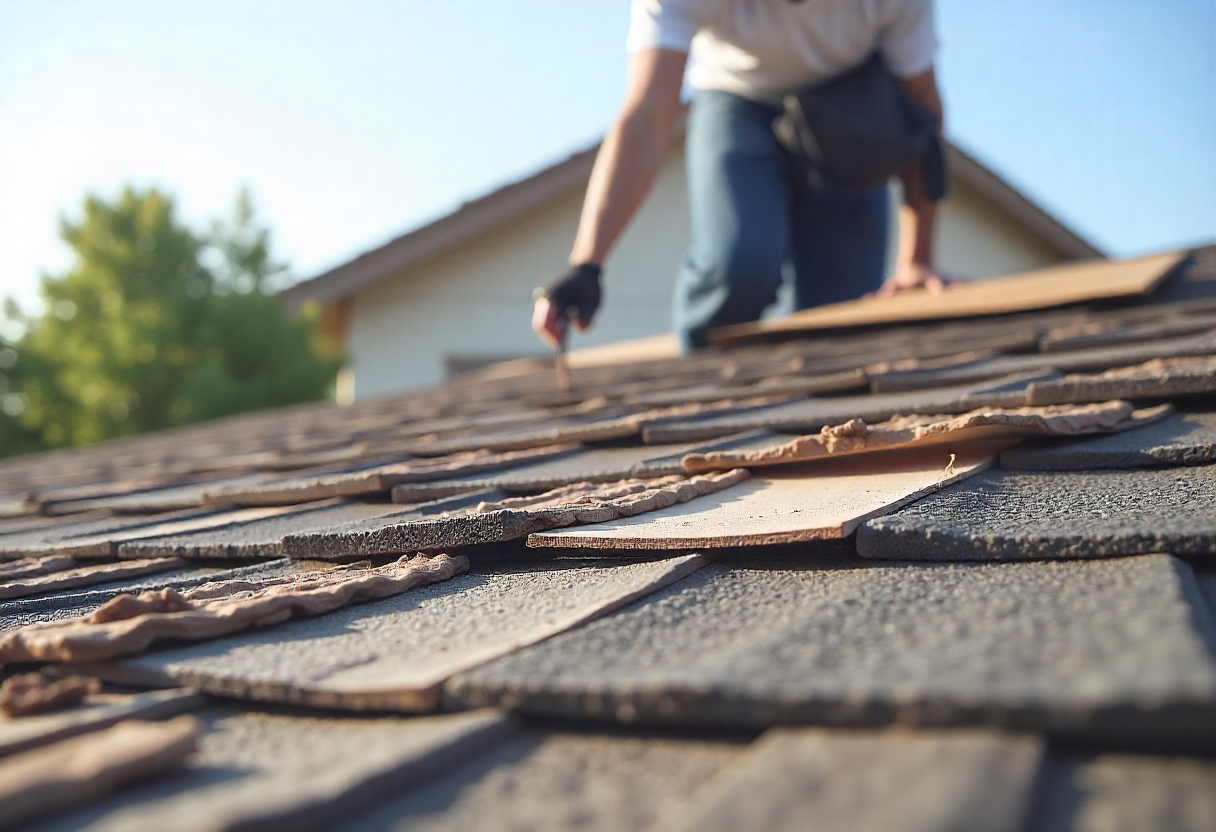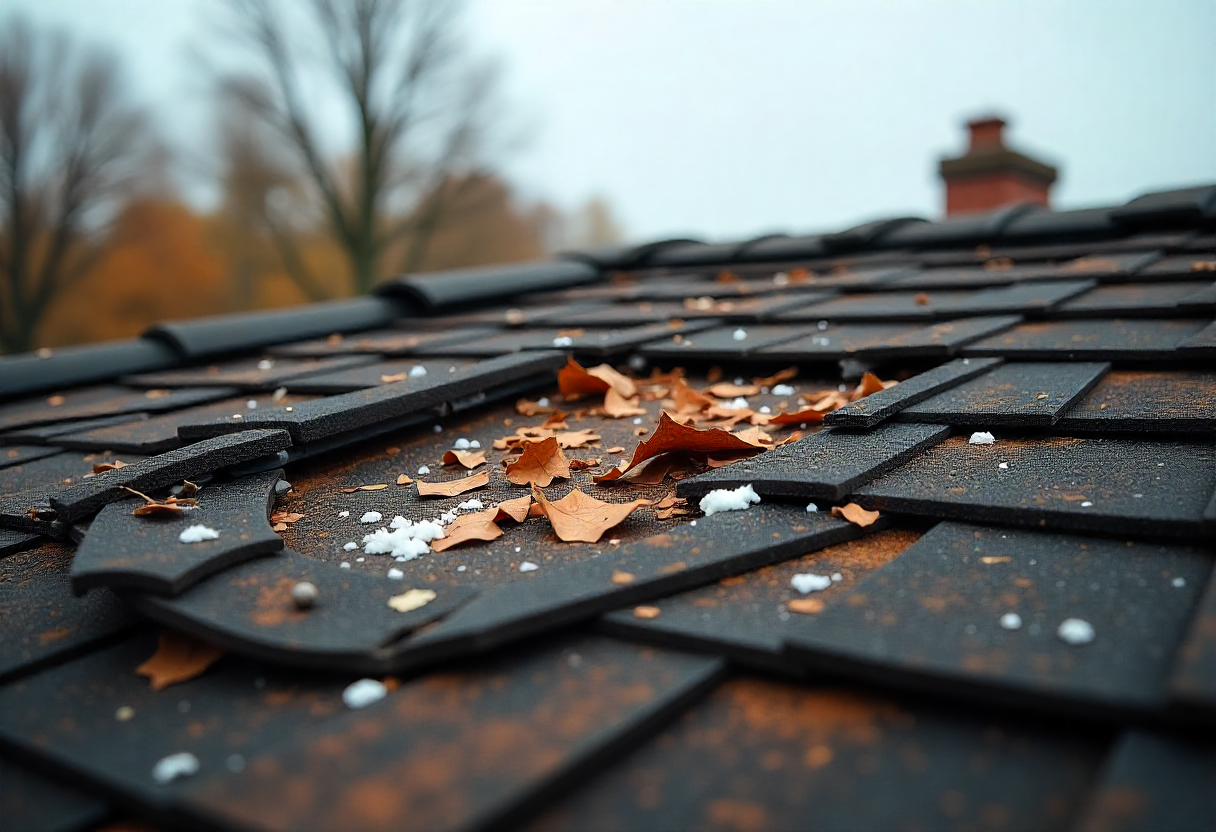When a fall storm rolls through, the last thing any homeowner wants to discover is a roof full of leaks or missing shingles. Yet in many parts of the country, heavy winds, hail, and downpours are a reality. If your roof takes a hit, you’ll likely turn to your insurance policy for help. Filing a roof insurance claims process sounds straightforward, but in reality, many homeowners run into problems that cost them time and money.
Let’s break down the right way to handle the situation and the mistakes you’ll want to avoid if you’re thinking about a roof damage insurance claim after a storm.
Acting Quickly Matters
Time is not your friend when it comes to storm damage. The longer you wait, the worse the problem gets, and insurance companies often look for reasons to deny or reduce coverage. If you are filing roof insurance claim after storm, your first step should be documenting the damage as soon as it’s safe. Take photos from different angles, both up close and from the ground. Save receipts if you need emergency repairs, like tarping the roof to stop leaks.
Insurance adjusters want proof, and clear evidence is the best way to strengthen your claim. Waiting weeks to act can raise red flags and might even lead to a denial.
Common Errors Homeowners Make
Unfortunately, many people trip up during the process. It’s easy to make mistakes when you’re stressed and dealing with storm damage, but awareness goes a long way. Some of the common mistakes roof insurance claim filers make include:
- Failing to document damage before repairs begin
- Not reviewing the policy to understand coverage details
- Forgetting to get multiple repair estimates
- Allowing the insurance company to dictate repairs without question
- Overlooking hidden damage beneath the surface
Knowing what not to do is just as important as knowing what steps to take.
The Role of Fall Storms
Fall is a tricky season for roofs. Strong winds pull at shingles, heavy rains exploit even tiny cracks, and hailstones can leave dents and fractures. After a major weather event, you may find yourself needing fall storm roof insurance claim tips to make sure you do everything by the book. The best tip? Act with urgency and precision. Inspect your home, call your insurer quickly, and involve a roofing contractor who can provide an honest assessment.
Fall storms can sometimes cause damage that isn’t immediately visible. That’s why a professional inspection is crucial. A small leak now may turn into major structural damage by winter.
When Hail Is the Culprit
Few things damage a roof as efficiently as hail. Even relatively small hailstones can crack shingles, loosen tiles, or bruise roofing materials in ways that lead to long-term leaks. If you’re overwhelmed, professional hail damage roof insurance claim assistance can make the process much easier. Contractors experienced with hail damage know exactly what to look for, how to document it, and how to speak the same language as insurance adjusters.
This type of help can mean the difference between a partial payout and full coverage for necessary repairs.
Understanding Your Coverage
Policies can be complicated, and many homeowners don’t realize what is included until they need it. Storm damage roof insurance coverage may include repairs, replacement, or temporary fixes, depending on the terms of your policy. However, exclusions are common. For example, some policies only cover damage from certain types of storms or require higher deductibles for wind or hail.
Before filing, take time to review your insurance policy closely. Understanding your coverage makes it easier to know what to expect and to challenge any unfair denials.
Steps to Follow for a Strong Claim
When the storm clears, emotions often run high, but a clear plan helps. Here are the main steps you should take:
- Document Immediately: Capture detailed photos and videos of all visible damage.
- Prevent Further Damage: Temporary fixes like tarps can stop leaks until repairs are made.
- Call Your Insurer Quickly: Delays can weaken your claim.
- Get a Professional Inspection: Contractors can uncover hidden issues.
- Request Multiple Estimates: This ensures fair repair costs.
- Stay Involved: Keep records of all communication and follow up regularly.
A claim supported by thorough documentation and professional input is far more likely to succeed.
Also Read: A Step-by-Step Guide to Roof Insurance Claim Process in Texas
Why Professional Help Matters
Many homeowners try to handle claims entirely on their own, but the process can be overwhelming. Insurance companies deal with claims every day, and they know how to protect their bottom line. Having experts on your side, whether roofing specialists or claim assistance services, levels the playing field.
A contractor can provide detailed damage reports, while public adjusters (if you choose to hire one) can negotiate directly with your insurance company. Their job is to ensure you get what you’re entitled to, not just the minimum payout.
Also Read: How 911 Exteriors Helps Homeowners Fight Back Against Denied Roof Claims
Avoiding Costly Mistakes
If you want to avoid setbacks, keep these points in mind:
- Don’t wait too long to file
- Don’t sign off on repairs before the insurance inspection
- Don’t rely only on the adjuster’s opinion
- Don’t pay large sums upfront without written agreements
- Don’t assume your policy covers everything automatically
By keeping a cool head and being proactive, you avoid falling into the traps that so many homeowners do.
Final Thoughts
Dealing with storm damage is stressful, but the claims process doesn’t have to add more frustration. Whether it’s wind, rain, or hail, your roof is your home’s first defense against the elements. Filing an insurance claim correctly ensures you get the support you need to restore that protection.
The key is avoiding mistakes, gathering proof, and leaning on professionals when necessary. From documenting every crack and missing shingle to reviewing your policy line by line, each step strengthens your case. With the right approach, you can move through the process smoothly and get your home back to normal faster.
Remember, the goal is not just to repair your roof, but also to protect your investment and peace of mind. The next time a fall storm strikes, you’ll know exactly how to handle the claims process without unnecessary stress.






